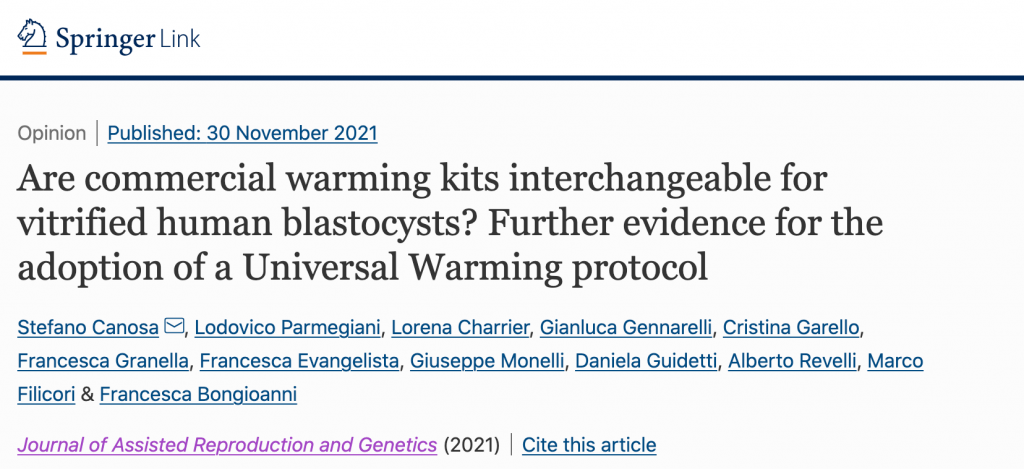
Are commercial warming kits interchangeable for vitrified human blastocysts? Further evidence for the adoption of a Universal Warming protocol
Stefano Canosa, Lodovico Parmegiani, Lorena Charrier, Gianluca Gennarelli, Cristina Garello, Francesca Granella, Francesca Evangelista, Giuseppe Monelli, Daniela Guidetti, Alberto Revelli, Marco Filicori, Francesca Bongioanni
J Assist Reprod Genet . 2021 Nov 30. doi: 10.1007/s10815-021-02364-1. Online ahead of print.
Abstract
Purpose: To study whether a new combination of different warming kits is clinically effective for vitrified human blastocysts.
Methods: This is a longitudinal cohort study analysing two hundred fifty-five blastocysts warming cycles performed between January and October 2018. Embryos were vitrified using only one brand of ready-to-use kits (Kitazato), whereas the warming procedure was performed with three of the most widely used vitrification/warming kits (Kitazato, Sage and Irvine) after patient stratification for oocyte source. The primary endpoint was survival rate, while the secondary endpoints were clinical pregnancy, live birth and miscarriage rates.
Results: We observed a comparable survival rate across all groups of 100% (47/47) in KK, 97.6% (49/50) in KS, 97.6% (41/42) in KI, 100% (38/38) in dKK, 100% (35/35) in dKS and 100% (43/43) in dKI. Clinical pregnancy rates were also comparable: 38.3% (18/47) in KK, 49% (24/49) in KS, 56.1% (23/ 41) in KI, 47.4% (18/38) in dKK, 31.4% (11/35) in dKS and 48.8% (21/ 43) in dKI. Finally, live birth rates were 29.8% (14/47) in KK, 36.7% (18/49) in KS, 46.3% (19/41) in KI, 36.8% (14/38) in dKK, 25.7% (9/35) in dKS and 41.9% (18/43) in dKI, showing no significant differences.
Conclusion: This study confirmed the efficacy of applying a single warming protocol, despite what the “industry” has led us to believe, supporting the idea that it is time to proceed in the cryopreservation field and encouraging embryologists worldwide to come out and reveal that such a procedure is possible and safe.

